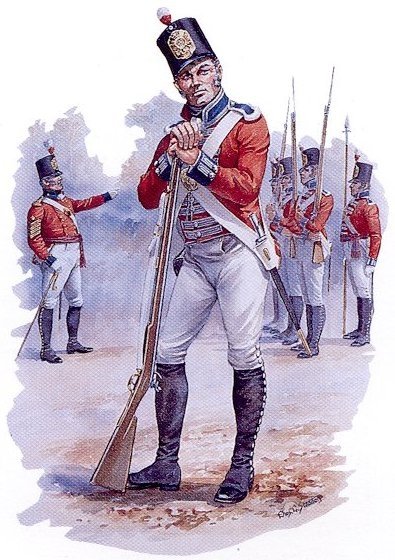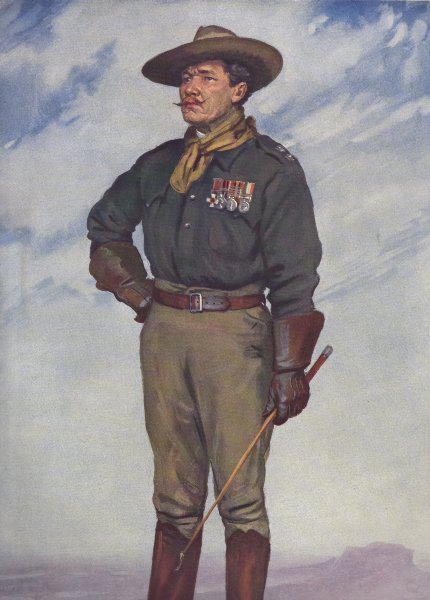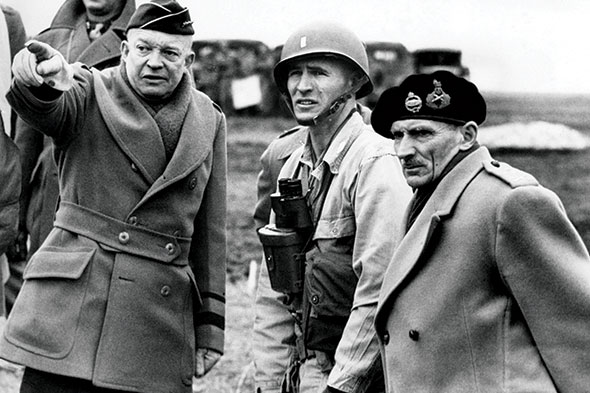
(Image source: WikiMedia Commons)
“Warfare isn’t always the sole province of the youthful. In fact, throughout military history, there have been a number of examples of the elderly making battlefield contributions.”
IN MARCH 1943, a small team of British commandos boarded and destroyed the Nazi spy ship Ehrenfels while it was moored in Mormugao Harbour on the Portuguese island of Goa.
The German vessel might have looked like any other harmless cargo carrier, but the Ehrenfels and two others ships in the harbour, the Drachenfels and the Braunfels, were secretly transmitting information about Allied shipping in local waters to U-boats prowling the area.
The mission to destroy the Ehrenfels was a ticklish operation; any Allied action would be a clear violation of the sovereignty of neutral Portugal. Thats why the British Special Operations Executive (SOE) in India turned to a crack outfit to tackle the job — one with experience… a lot of experience it turned out. The mission was carried out by the Calcutta Light Horse, a local reserve regiment mostly made up of retired veterans of the Boer War.
The tale of how this group of old timers traded in their golf clubs and shuffle board paddles for Sten guns and satchel charges went on to become the inspiration for a book entitled Boarding Party: The Last Action of the Calcutta Light Horse as well as the 1980 Gregory Peck, David Niven film The Sea Wolves.
Their story, along with some other famous examples of aging warriors, shows that warfare isn’t always the sole province of the youthful. In fact, throughout military history, there have been a number of examples of the elderly making battlefield contributions. Consider these:

Ancient warriors
The citizen armies of classical Greece were made up of men of all ages – including some who would today qualify for old age pensions. From the 7th Century BCE through to the 4th century BCE, city states like Athens had no standing armies of professional soldiers. Instead, their armoured formations of spearmen, known as phalanxes, were manned by able-bodied citizens known as hoplites. Each hoplite was responsible for providing his own armour, shield, helmet and spear and was required to report annually for a refresher course in the lethal arts. In times of emergency, city states would call upon these trained citizens to form up and march off to battle. In Athens, males were required to muster up to the age of 60 (even though the average male life expectancy in the 5th Century BCE was less than 50). In Sparta, Athens’ more warlike neighbour, there was no retirement age for hoplites.

The Old Guard
While not quite as elderly as some of ancient Greece’s oldest hoplites, Napoleon’s elite Old Guard was manned by the emperor’s longest-serving, bravest and most-decorated veterans. By 1815, soldiers wishing to join the vaunted corps had to have at least 12 years of service under their belts. They also were required to be a minimum six-feet-tall and in top physical shape. Typically in their 30s and 40s by the time of the Battle of Waterloo, many soldiers in the Old Guard were seasoned veterans of 20 or more campaigns and had fought for Bonaparte since his earliest battles. The average age of a soldier in the 1er Grenadiers and 1er Chasseurs in 1815 was 35 years old – not exactly over the hill, but certainly far older than the typical French infantryman of the day. And with that age and experience came privileges not enjoyed by others in the Grande Armée. For starters, members of the Old Guard were paid more than ordinary troops. Also, privates were addressed by the honorific monsieur by NCOs and even officers. In addition, other units were obliged to clear the road and stand at attention when the Old Guard passed. And because of their long service to the emperor, the rank and file were allowed to gripe freely about army life, even in front of their superiors. Accordingly, the men of these regiments became known as les Grognards or “Grumblers.” But when it came to combat, they held their own, and to the bitter end too. As the tide at Waterloo turned against Napoleon, two battalions of his favoured veterans held on to the final minutes of the epic struggle before finally breaking. After the battle, the reinstalled ruler of France, Louis the XVIII, ordered the Old Guard disbanded.

10th Royal Veterans Battalion
Although not as illustrious as their French counterparts, the British had their own regiments for seasoned foot soldiers. The 10th Royal Veteran’s Battalion for example was made up of redcoats in their 30s and even late 40s — men who were considered by many to be long past their prime. The unit was the brainchild of the British general Isaac Brock, then still a colonel serving in the backwater of North America. In 1806, Brock requested a special unit comprised of veteran soldiers from the war with France be formed and sent to shore up the flagging defences of Upper and Lower Canada. More than 600 volunteers joined the battalion, which was shipped to Canada the following year. The typical soldier in the unit had accumulated an average of 26 years in the service. When war with America erupted in 1812, the 10th was the first into the fray. Soldiers of the unit scored Britain’s opening land victory in the two-year conflict: the capture of Fort Michlimackinac, a vital outpost on the Upper Great Lakes. Later the battalion would see action in the battle at the River Raisin and Fort Stephenson. As Britain rushed more units into Canada the following year, the 10th was sent to Quebec to perform garrison duties. Two years after the war, the outfit was disbanded.

The Greybeards
While both Union and Confederate armies in the U.S. Civil War formed companies of veteran soldiers for use at both the front and in the rear echelon, “the Greybeards” of Iowa were perhaps the oldest. Formed in 1863, the regiment was made up entirely of men over the age of 50; some were even pushing 70. Considered too old for the rigours of frontline combat, the Greybeards were tasked with guarding Union rail lines and prison camps. Only two of the company were killed in action – both died while defending a train against a Rebel ambush. At war’s end the entire unit was granted an honourable discharge.

The Old and the Bold
Not as aged as the Greybeards, but perhaps more colourful, was the 25th Service Battalion, Royal Fusiliers. The unit, known as “The Frontiersmen,” was formed in British East Africa in early 1915 by a 55-year-old colonel named Daniel Patrick Driscoll. While not exclusively an outfit for old timers, the 25th was nicknamed “the Old and the Bold” because a large number of the company were aging settlers from around the colony. In addition to its middle-aged recruits, the battalion also attracted some rather exceptional volunteers. Among them were a number of battle hardened vets of the Boer War, some French Foreign Legionnaires, Russian fugitives, a handful of American cowboys, an Arctic explorer, a British millionaire, a circus clown, an opera singer and a noted naturalist. For the next three years, the 25th would make a name for itself doing battle against the Kaiser’s forces in German East Africa. The battalion was disbanded in 1918.
(FIRST PUBLISHED JULY 6, 2012)










The oldest British soldier to die on the western front was 68 years old.
Fascinating. Was he an officer, NCO, private?
I had not heard of this action in 1943 nor of the Calcutta Light Horse. Very good stuff. Thanks for sharing.
The movie isn’t bad. A bit old, but fun.
Wow! I’m really enjoying the design of your web site. Are you using a custom made template or is this freely available to all individuals? If you do not want to say the name of it out in the general public, please e-mail me. I’d absolutely love to get my
hands on this template! Cheers.
Hey… no problem. I am using the WordPress theme origin, but I designed the banner at the top myself using photoshop.